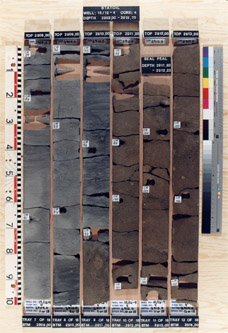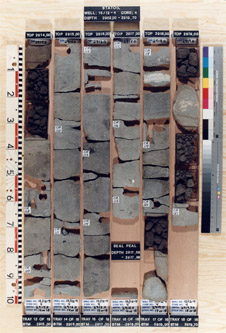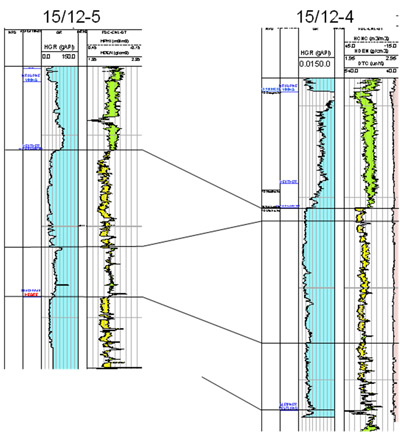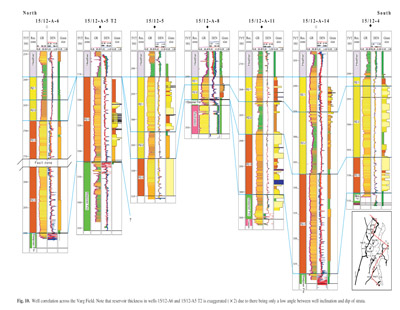Intercalated sandstones and mudstones. The grainsize of the sandstones varies from very fine to
coarse. The finer grained units are bioturbated and show very poor sorting with a high amount of
mud. Thin carbonate cemented intervals occur both within fine grained and coarser grained units.
Sample depository
Core photos from type well (from NPD)

2908-2914 m |

2914-2919.7 m |
Thickness
The Fenris Member varies in thickness from 16 to around 220 m in the Varg area.
Geographic distribution
Type well
Well name: 15/12-4.
WGS84 coordinates: N 58°3'09.16", E 1°54'11.61"
UTM coordinates: 6435232.25 N, 435264.02 E, zone 31.
Drilling operator name: Den norske stats oljeselskap AS
Completion date: 31.10.1984
Status: P&A Oil
Interval of type section:
2911 - 3130.5 mRKB, thickness in type well 219.5 m
Reference wells
Well name: 15/2-5.
WGS84 coordinates: N 58°4'53.36", E 1°54'53.24"
UTM coordinates: 6438443.61 N, 435998.33 E, zone 31.
Drilling operator name: Den norske stats oljeselskap AS
Completion date: 04.05.1986
Status: P&A Oil
Interval of reference section:
2916.5 - 3024 mRKB, thickness in reference well 107.5 m
Well name: 15/12-10 S.
WGS84 coordinates: N 58°4'40.48", E 1°53'25.56"
UTM coordinates: 6438068.65 N, 434555.46 E, zone 31.
Drilling operator name: Saga Petroleum ASA
Completion date: 01.11.1996
Status: Oil
Interval of reference section:
3372 - 3388 mRKB, thickness in reference well 16 m.
Upper and lower boundaries
In the type well the lower boundary shows a sharp transition from dark grey mudstones to medium
grained sand. The upper boundary in the type well is marked by a gradual transition from sand to
mudstone.
Well log characteristics
On the gamma ray the base of the Fenris Member is marked by an abrupt decrease in API from the
underlying higher gamma mudstones. The density log also shows an abrupt upward decrease. The
transit time (DT) shows an upward increase, while there is marked drop in the Neutron response,
dependant on the presence of hydrocarbons. Repeated box formed lows with variable thickness in
the gamma log separated by high gamma thin intervals characterise the turbidite dominated
interval. The top of the member is characterized by a marked increase in gamma response. The
density and the inverse transit time logs parallel the gamma log.

Wireline logs of the Fenris Member in type and reference wells.
|
Correlation

Correlations of the Fenris Member. From J. E. Battié, E. I. H. Siggerud and O. G. Tveiten
(2005).
|





